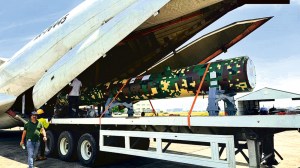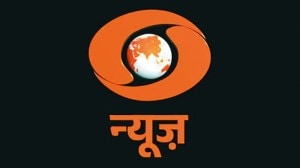- India
- International
The e-afterlife
At this village in South 24 Parganas district, life revolves around discarded monitors and tangled wires for almost everyone, men, women or children.
 Kolkata produces about 9,000 tonnes of e-waste annually. Much of that ends up in informal recycling hubs as Sangrampur, where there are few safety measures and the risks are high.
Kolkata produces about 9,000 tonnes of e-waste annually. Much of that ends up in informal recycling hubs as Sangrampur, where there are few safety measures and the risks are high.
Sangrampur station in South 24 Parganas district of West Bengal is meant to whiz past you on a train ride. But once every hour, when the Diamond Harbour local from Sealdah station in Kolkata makes its scheduled halt around noon, the station comes alive. Men and women hop out of the train carrying huge gunny sacks of keyboards and CPU shells. They find their way through the milling crowds, defunct computer monitors delicately balanced on their heads. That’s when Sangrampur comes into being as an e-waste village.
Adamali Naskar, 50, has just got off, balancing a huge gunnysack on his frail shoulders. His “catch” for the day are a few discarded keyboards, motherboards and monitors. “People don’t think twice before discarding perfectly functional computers these days. Everybody wants a laptop,” says Naskar, lighting a beedi.
Minutes away from the station is the lush green sprawl of the Bengal countryside, with its paddy fields, mud huts with thatched roofs and scarecrows made of discarded mishti doi pots. But as you get to the Tekpaja area, the green changes to a dull grey.
Past fields heaped with computer shells and water bodies turned black with floating silicon ribbons, is Naskar’s thatched-roof hut. He lives here with his wife, son, daughter-in-law and grandson. The modest mud hut has two rooms, a kitchen and a verandah.
A stack of CPUs lies in one corner of the verandah. Bakibullah, Naskar’s 26-year-old son, rushes out to help him with the sack. Naskar’s daughter-in-law Rubina is already busy tweaking something out of a motherboard. Her five-year-old son Habibullah is playing with a keyboard. Every one of the 50-odd families like Naskar’s in Tekpaja area of Sangrampur is involved in the e-waste business.

“Everyone in my family, including my five-year-old grandson, helps me dismantle the scrap that I bring. Even then, we collectively earn only Rs 500 a day,” says Naskar.
After the monitor cabinet and kits are sorted out — Naskar has bought them for Rs 80 a piece — the women and children sit down to dismantle them, swiftly extracting copper wires, batteries and other reusable hardware. “They have more patience for this sort of work and they have nimble fingers. Moreover, men are usually too tired after all that gathering,” says Naskar, who has taken this break to pull out another beedi and light up.
A few minutes later, the giant heap has been sorted out and now there are smaller pyramids — one a tangle of brightly coloured wires, another of batteries. “These will now be packed and sold in markets in Kolkata,” says Naskar.
Indians generate about 2,70,000 tonnes of e-waste annually, of which Kolkata produces 9,000 tonnes. Much of that waste ends up in informal recycling hubs as Sangrampur, where there are few safety measures and the associated risks are high. Most of the e-waste that comes to Sangrampur is collected from households in Kolkata and surrounding areas. Some of the waste is also collected from IT companies and electronic companies.
A new law that came into effect in 2011 bars IT and electronic companies from disposing of their e-waste to the unlicensed, informal sector. If that happens, Sangrampur will have to rethink its business. The new regulations have stringent requirements for those who wish to formalise their business, but the process of applying for licences is cumbersome and involves high costs.
It’s 2 pm and the dull thud of hammers envelops the locality. Salim, 54, is bent over what looks like a tangle of adapters and cables. His workshop is on the ground floor of his two-storeyed house, the only concrete one in the locality. The workshop is essentially a courtyard filled with computer shells, mother boards and keyboards. His workers all hammer away at motherboards without pausing to look.
“Afternoons are the busiest time of the day. That’s when the collectors come back with their haul, children return from school and women sit down to work after their household chores. And then, we all start working together,” says Salim. Everyone who is involved in the e-waste business in Sangrampur talks of Salim as the “man who started it all”.
He shifted to Sangrampur from Park Circus in Kolkata after his marriage to a girl here. “I used to be a small-time scrap collector in Kolkata. I would collect discarded radios, transistors and old televisions from Chandni Chowk area of the city and sort them out. When I came here, this place was famous for its zari work. I was the first one to start the e-waste business here. Initially, I used to get record players, radios, VCRs and black-and-white TVs. Eventually, computers arrived, and everyone thought this was a better business than zari work,” says Salim.
Salim’s wife Taslik Bibi helps him in his business. As she sits deftly uncoiling a copper roll from a motherboard, she says, “We cut our hands quite frequently while working, but we have no time to worry about that. We can’t afford gloves.” Anwar Hussain, 11, sits in a corner of Salim’s workshop, looping a copper wire around his finger. Everyday, he reaches home at 4 pm and heads to Salim’s workshop. “I only attend classes till the tiffin break. I go to school for the mid-day meal,” he says.
He also accompanies Salim and others to the fields where the wires are set on fire. “My eyes water when we go to the fields to burn the wires and waste. The smoke is so bad that we almost choke,” says Hussain.
Engaged in this work ever since he was 9, Hussain says he doesn’t mind it, except that he can’t watch television or movies. “My eyes water if I stare at the screen for too long,” he says. Hakim Naskar, 40, who has been involved in e-waste work for about seven years, too gets bouts of dizziness but he isn’t complaining. “This business is lucrative and isn’t as demanding as zari work,” he says.
Salim, however, hopes things will get better for Sahrampur. “If the government helps us set up a factory here and formalises the sector, life will be easier. There will be a much more scientific way of disposing waste. Hundreds of us won’t lose our livelihood,” says Salim. He then offers to take us to the construction site of his new e-waste recycling factory.
Against the setting sun, Salim’s two-storied factory site seems incredulously small. But his dreams are big. “If we get the government’s help, we can employ hundreds here,” he smiles.
Apr 20: Latest News
- 01
- 02
- 03
- 04
- 05






































